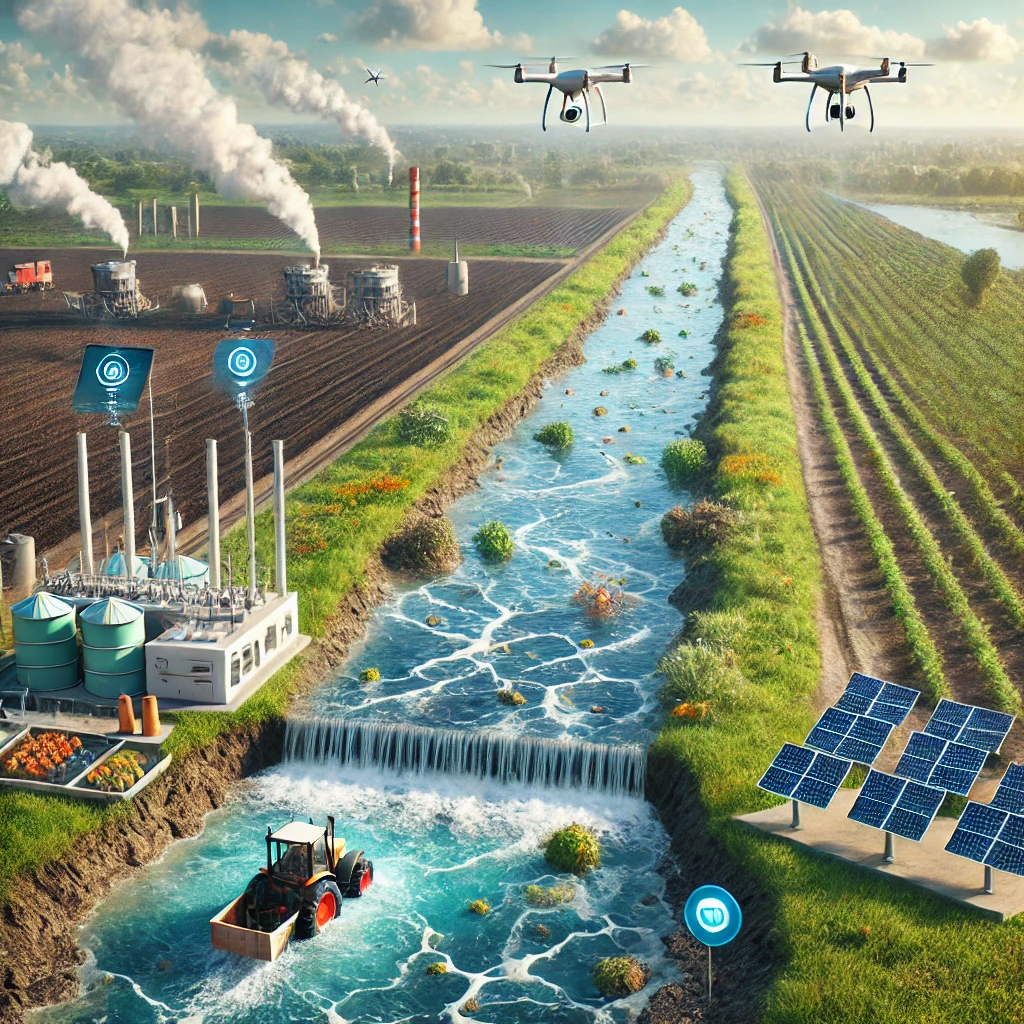AI crucial for nonpoint source pollution control, yet underused worldwide
Nonpoint source pollution, characterized by its diffuse origins and transport mechanisms, remains a central barrier to global water sustainability. The study found that AI techniques are being widely deployed across three major functional domains: water quality prediction, groundwater vulnerability mapping, and pollutant-specific modeling.

Artificial intelligence is increasingly being deployed to monitor and predict one of the planet’s most complex environmental threats - nonpoint source pollution (NPSP). A new study published in Sustainability offers the first global status update on how AI is being used to manage diffuse water contamination, revealing both breakthroughs and critical limitations in the technology’s application.
The study, “Artificial Intelligence Application in Nonpoint Source Pollution Management: A Status Update,” provides the most detailed assessment to date of how machine learning, deep learning, remote sensing, and Internet of Things (IoT) platforms are being integrated into NPSP monitoring and modeling efforts. It highlights both significant advancements and persistent challenges, particularly around data limitations, model transparency, and unequal global research contributions.
How is AI being applied to assess and mitigate NPSP?
Nonpoint source pollution, characterized by its diffuse origins and transport mechanisms, remains a central barrier to global water sustainability. The study found that AI techniques are being widely deployed across three major functional domains: water quality prediction, groundwater vulnerability mapping, and pollutant-specific modeling.
In river systems, AI models such as support vector machines (SVM), gene expression programming (GEP), and multilayer perceptrons (MLP) have been used to predict electrical conductivity, total dissolved solids, and sodium adsorption ratios with high precision. Artificial neural networks (ANNs) have been applied for virtual monitoring using chemical indicators like nitrate, phosphate, and total suspended solids. These models consistently demonstrated strong performance, with reported R² values as high as 0.88 and low root mean square errors (RMSEs), indicating high predictive accuracy.
Groundwater systems, long challenged by limited monitoring data, have seen the use of boosted regression trees (BRT), k-nearest neighbors (KNN), and convolutional neural networks (CNN) to generate vulnerability maps based on hydrogeological inputs, land use, and topography. These models achieved classification reliability through metrics such as area under the curve (AUC), with CNN applications recording values as high as 0.95.
For pollutant-specific modeling, hybrid models such as model tree–genetic algorithm (MT–GA) and wavelet-optimized approaches like WER-GBO were used to predict concentrations of heavy metals, nutrients, and sodium in stormwater and agricultural runoff. Deep learning frameworks like DNN and LSTM, although less frequently deployed, showed high potential for long-term environmental forecasting.
Yet, despite these technological advances, AI applications remain concentrated in a few high-research-output countries. China alone accounted for 29.4% of all reviewed studies, followed by India and the United States. Contributions from South America and Africa were minimal, pointing to a troubling research disparity that could hinder localized NPSP mitigation in vulnerable regions.
What technologies are enhancing AI’s role in NPSP monitoring?
The review identifies a growing convergence between AI and enabling technologies, particularly IoT devices, unmanned aerial vehicles (UAVs), satellite imaging, and Geographic Information Systems (GIS). This integration is reshaping how pollution is tracked in real time and over wide spatial areas.
Low-cost sensor networks such as qHAWAX have enabled localized air and water quality monitoring, feeding real-time data into AI models for predictive alerts. UAVs equipped with multispectral cameras are increasingly used to monitor agricultural runoff and composting activities, while satellite platforms like Sentinel-2 and Landsat provide high-resolution imagery for analyzing land use changes that drive NPSP.
The coupling of these technologies with AI has expanded both the spatial and temporal resolution of environmental monitoring. For instance, when combined with optimized extreme learning machines (ELMs) and particle swarm optimization, these platforms achieved improved stability and generalizability. In groundwater studies, CNNs trained on satellite-derived topographical and chemical data demonstrated superior vulnerability mapping across complex landscapes.
The study also highlights emerging applications of explainable AI (XAI) tools such as SHAP (SHapley Additive exPlanations), which are beginning to be used for interpreting model outputs. This represents a vital step toward improving stakeholder trust in AI-derived predictions—a significant barrier in policy and governance settings.
However, integration remains uneven. Many reviewed AI models were developed in isolation, with limited connection to real-time sensor data or cross-domain platforms like remote sensing. The authors emphasize that seamless interoperability among data systems is essential for deploying AI at scale for real-time NPSP management.
What challenges and knowledge gaps must be addressed?
Despite strong growth in publications and technical development, the study outlines four persistent gaps hindering the widespread, effective use of AI in NPSP contexts:
- Model Development and Optimization: Many studies used suboptimal input selections or lacked ensemble learning techniques, limiting model robustness. Deep learning architectures like CNNs and LSTMs remain underutilized in environmental AI platforms. Only a minority of studies benchmarked their models using multi-watershed datasets or quantified predictive uncertainty.
- Data Limitations: Sparse, inconsistent, and unbalanced datasets remain a foundational barrier. In particular, high-temporal-resolution data for optically inactive pollutants, like nitrates and phosphates, are difficult to capture through current satellite platforms. This limits model generalizability across watersheds.
- Governance and Policy Integration: The study found that AI models rarely incorporate socio-political variables such as income inequality, population dynamics, or environmental justice concerns. As a result, many tools are not aligned with real-world decision-making needs or regulatory frameworks.
- System Integration and Real-Time Deployment: Few AI models are embedded within live environmental monitoring systems. Without dynamic data streams from IoT networks or real-time feedback loops, AI tools remain underleveraged for anticipatory management or adaptive policymaking.
The authors call for the development of AI-driven early warning systems, transparent explainability protocols, investment in enabling infrastructure, and strong interdisciplinary collaboration between data scientists, environmental engineers, and policy experts.
- FIRST PUBLISHED IN:
- Devdiscourse










